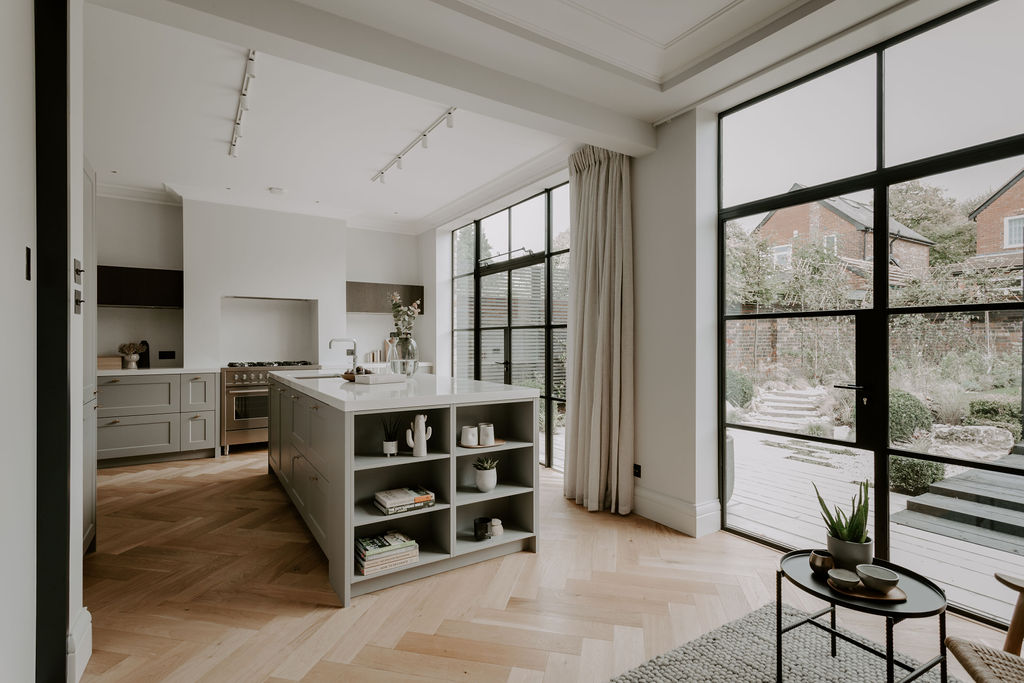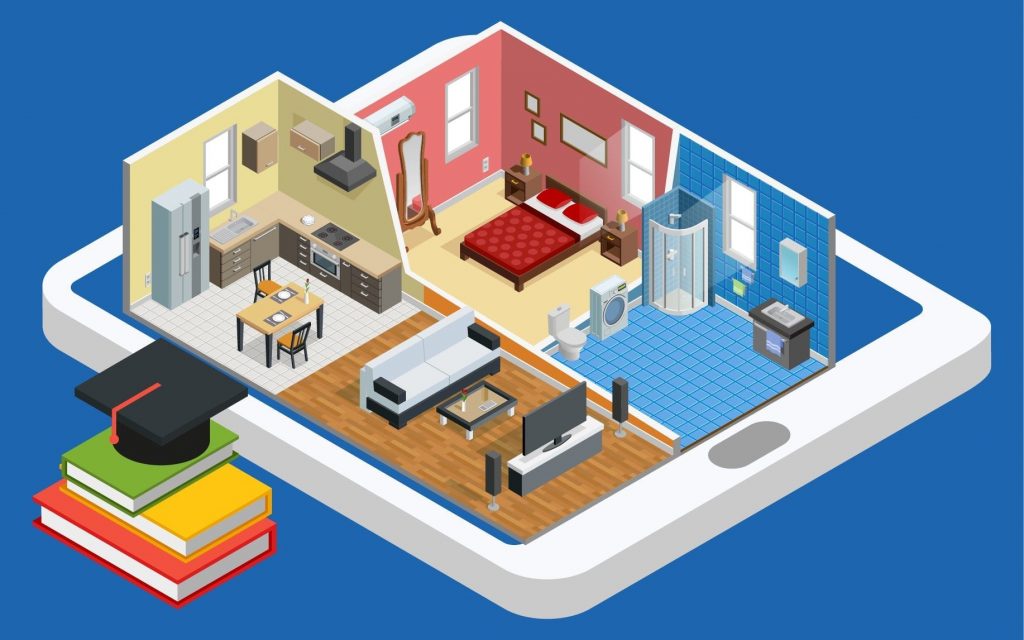The Art of Equilibrium: Just How Interior Design and Home Designer Collaborate for Stunning Outcomes
In the world of home style, striking a balance between appearances and functionality is no small task. This fragile balance is accomplished through the unified partnership between indoor developers and designers, each bringing their distinct knowledge to the table. Stay with us as we explore the complexities of this collaborative procedure and its transformative influence on home style.
Understanding the Core Distinctions Between Interior Decoration and Home Architecture
While both Interior Design and home design play important roles in developing cosmetically pleasing and useful areas, they are inherently various disciplines. Home style mostly focuses on the architectural facets of the home, such as developing codes, security laws, and the physical building of the space. It takes care of the 'bones' of the framework, dealing with spatial dimensions, bearing walls, and roof layouts. On the other hand, Interior Design is much more concerned with improving the visual and sensory experience within that framework. It includes choose and organizing furniture, picking color design, and incorporating ornamental components. While they work in tandem, their functions, obligations, and locations of know-how diverge substantially in the creation of a harmonious home setting.
The Synergy Between Home Design and Inside Layout
The synergy between home architecture and Interior Design lies in a shared vision of design and the enhancement of practical appearances. When these two fields straighten sympathetically, they can change a space from average to extraordinary. This cooperation requires a deeper understanding of each discipline's principles and the ability to produce a cohesive, aesthetically pleasing environment.
Unifying Design Vision
Combining the vision for home style and interior layout can create an unified living space that is both useful and visually pleasing. It advertises a synergistic strategy where architectural components enhance interior style components and vice versa. Therefore, unifying the layout vision is important in mixing style and indoor design for magnificent results.
Enhancing Practical Visual Appeals
Just how does the synergy in between home design and Interior Design enhance practical appearances? This synergy makes it possible for the creation of areas that are not only visually attractive yet also easily usable. Architects prepared with their structural design, making certain that the room is sensible and efficient. The interior developer after that complements this with very carefully picked elements that boost the aesthetic appeals without endangering the functionality. This harmonious collaboration can lead to homes that are both livable and attractive. A designer may create a residence with high ceilings and huge home windows. The indoor developer can after that emphasize these features with large drapes and high plants, specifically, therefore boosting the visual allure while keeping the sensible advantages of all-natural light and spaciousness.
Value of Partnership in Creating Balanced Spaces
The collaboration in between interior developers and designers is essential in creating well balanced spaces. It brings consistency between style and architecture, bring to life spaces that are not just visually pleasing yet likewise useful. Checking out effective collaborative techniques can supply insights into just how this harmony can be successfully attained.
Balancing Style and Architecture
Equilibrium, a vital facet of both Interior Design and design, can only genuinely be achieved when these two fields operate in consistency. This consistency is not just an aesthetic factor to consider; it impacts the capability, durability, and eventually, the livability of a room. Interior developers and engineers should comprehend each other's functions, appreciate their proficiency, and interact properly. They must consider the interplay of structural aspects with design, the flow of areas, and the effect of light and shade. This joint procedure causes a natural, balanced layout where every element adds and has a function to the general visual. Therefore, harmonizing design and architecture is not just about producing lovely areas, yet concerning crafting rooms that function flawlessly for their citizens.
Effective Collective Approaches

Instance Studies: Successful Assimilation of Design and Style
Taking a look at numerous case research studies, it comes to be evident just how the successful integration of interior style and style can change a room. Designer Philip Johnson and indoor developer Mies van der Rohe teamed up to develop a harmonious balance between the interior and the structure, resulting in a smooth circulation from the exterior landscape to the inner Countryside Homes interior design living quarters. more tips here These case research studies highlight the extensive effect of an effective style and style partnership.

Getting Rid Of Difficulties in Layout and Design Cooperation
Regardless of the indisputable advantages of a successful cooperation between Interior Design and architecture, it is not without its obstacles. Communication problems can arise, as both parties may utilize various terms, understandings, and strategies in their job. This can bring about misunderstandings and hold-ups in task completion. An additional major difficulty is the harmonizing act of looks and functionality. Designers might focus on architectural honesty and safety, while developers concentrate on comfort and design. The integration of these goals can be intricate. Additionally, budget plan and timeline restraints commonly include pressure, potentially creating breaks in the collaboration. Reliable interaction, common understanding, and concession are essential to conquer these difficulties and attain a unified and effective collaboration.

Future Patterns: The Evolving Connection In Between Home Architects and Interior Designers
As the globe of home style continues to evolve, so does the relationship between engineers and interior designers. The pattern leans in the direction of a much more integrated and collaborative approach, breaking complimentary from typical roles. Designers are no more solely concentrated on architectural honesty, but likewise participate in boosting visual charm - Winchester architect. Conversely, interior designers are accepting technological facets, influencing overall layout and performance. This progressing synergy is driven by advancements in innovation and the expanding need for rooms that are not just aesthetically pleasing yet also practical and sustainable. The future guarantees a much more cohesive, ingenious, and adaptive technique to home style, as designers and developers remain to blur the lines, promoting a relationship that absolutely personifies the art of equilibrium.
Conclusion
The art of equilibrium in home design is achieved with the harmonious partnership between interior designers and designers. An understanding of each various other's techniques, reliable communication, and shared vision are essential in creating aesthetically spectacular, useful, and welcoming spaces. Regardless of difficulties, you could try here this collaboration promotes growth and technology in style. As the relationship in between home architects and indoor designers progresses, it will proceed to shape future patterns, enhancing convenience, efficiency, and individual expression in our space.
While both interior style and home design play essential functions in developing aesthetically pleasing and practical rooms, they are inherently various techniques.The synergy between home style and indoor design exists in a common vision of layout and the improvement of functional aesthetics.Combining the vision for home style and indoor design can produce a harmonious living room that is both useful and aesthetically pleasing. Therefore, unifying the style vision is critical in blending design and indoor design for magnificent outcomes.
How does the synergy between home design and indoor layout improve practical aesthetics? (Winchester architect)